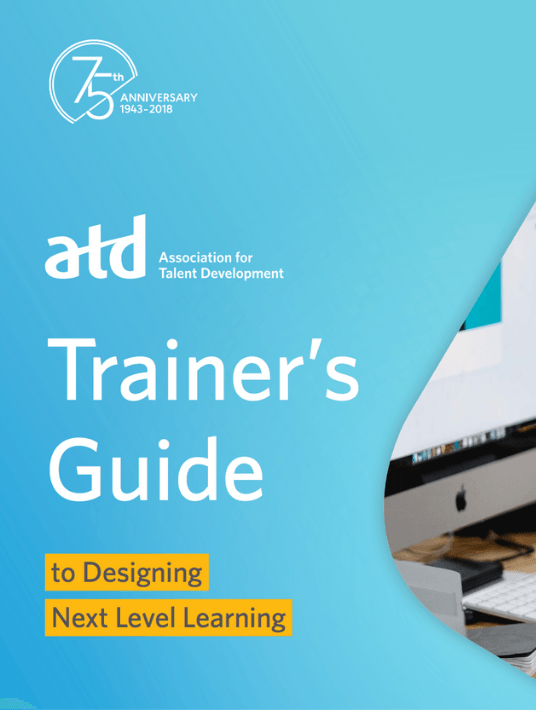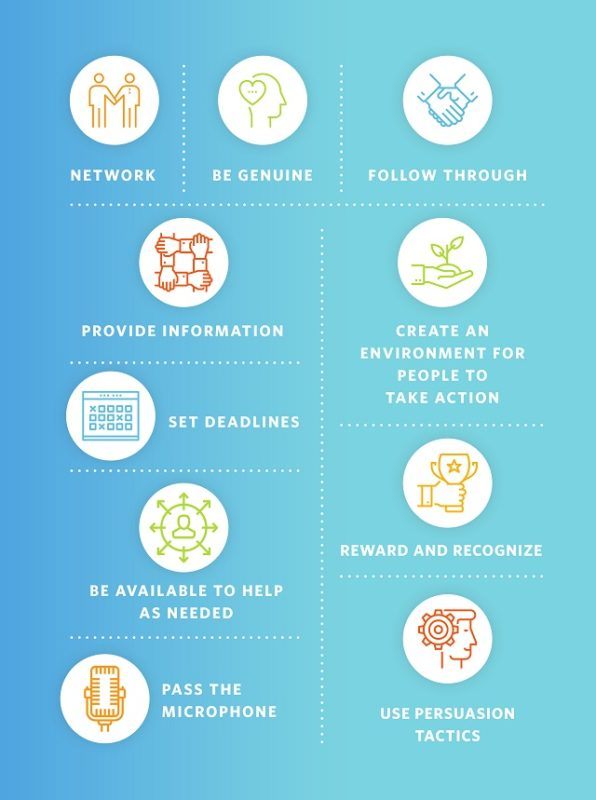How To Influence Subject Matter Experts
Short of becoming our SME’s boss, how can we gather their knowledge in an effective and timely way? We must use what experts call lateral leadership. Lateral leadership is all about getting things done when you are not the boss. It is leadership without the title or position. Lateral leadership concepts tell us that Instructional Designers are change initiative leaders.

In her article “Exerting Influence Without Authority,” Lauren Keller Johnson says lateral leadership is more important and necessary than ever. In this age of heightened business complexity, change and leading change initiatives have grown increasingly complicated. A majority of change initiatives now involve multiple functions within and even between companies, and many such efforts encompass an entire firm. New kinds of partnerships and alliances have emerged, as well, and they require change agents to exercise influence over peers from other companies. We must be mindful to use effective strategies for getting things done when working with experts who don’t report to us.
Use the tactics below to influence without authority:
1. Network
Establish relationships with people inside and outside your company whose support you need to design learning materials. This can be done by joining professional organizations, volunteering, joining cross-functional or cross-departmental teams, or scheduling regularly occurring meetings with SMEs.
If networking doesn’t come naturally, connect with individuals who can connect you with the people whose support you need or that you believe you will need in the future. For example, if a former colleague now works with a SME who you’d like to work with, reach out to your former colleague and ask them to make an introduction.
2. Be Genuine
Treat all people with respect by responding to their calls, texts, and emails in a timely manner. Spend time learning about others and not just about how they can help you. For example, learn about a SME’s background so you can appreciate their perspective.
3. Follow Through
If you owe someone at work a resource, some time, or a document, make sure you provide it. By consistently following through, you’ll create a trail of believers in your reliability and your ability to execute.
4. Offer To help Others
Demonstrate being a team player by helping others, even if they don’t come out and ask.
5. Provide Information
Don’t wait for a person to ask the right question. When working with SMEs from within my company (but outside of my department), I am thrilled when I can provide an update on a project that the SME may not yet have heard (so long as what’s being discussed can be shared).
6. Create An Environment For People To Take Action
Think about your favorite manager. Usually, it’s a person who helped you be your best and allowed you to shine through your work—not a micromanager. Do the same for others. Identify strengths in those you work with and allow people to leverage those strengths and flourish. Give SMEs space, and allow them to be creative and innovative. While you may lead with specific goals for working together, allow yourself the luxury of being flexible when it comes to what you discuss. You may find that the SME brings a concept or information to the table that you had not thought of before.
7. Set Deadlines
We’re all human, and if something doesn’t have a deadline, it’s easy to move to the back burner. Hold a kickoff meeting and set up a schedule of interim deadlines if necessary.
8. Be Available To Help As Needed
Use a shared, web-based project management timeline. I like to use Smartsheet. It helps me and my supportive SMEs stay on track and meet deadlines together. It also embeds transparency, displaying how much time it will take each of us to complete our parts.
9. Reward And Recognize
Thank those who have contributed, even in small ways, via email or note. Often people devalue a simple thank you, when it means so much to be thanked. Personally, I love a handwritten note.
10. Use Persuasion Tactics
Instead of using persuasion as a manipulation tool, use it with the goal of mutual benefit for yourself and your SME. View your SME as a peer (instead of just a brain who can help you meet your deadline). Partner to satisfy goals you both have. Brainstorm together. Talk about the benefits of this project for the SME.
11. Pass The Microphone
Instructional Designers should never do all the talking. Use active listening skills to learn where SMEs are coming from and what they know about the given topic. Confirm understanding by paraphrasing or summarizing what your SME has said. They’ll appreciate your effort to listen and learn from them. Influencing SMEs to willingly support you in your Instructional Design can be challenging, but it’s possible! It’s an art that requires practice.

Originally published at www.td.org.

